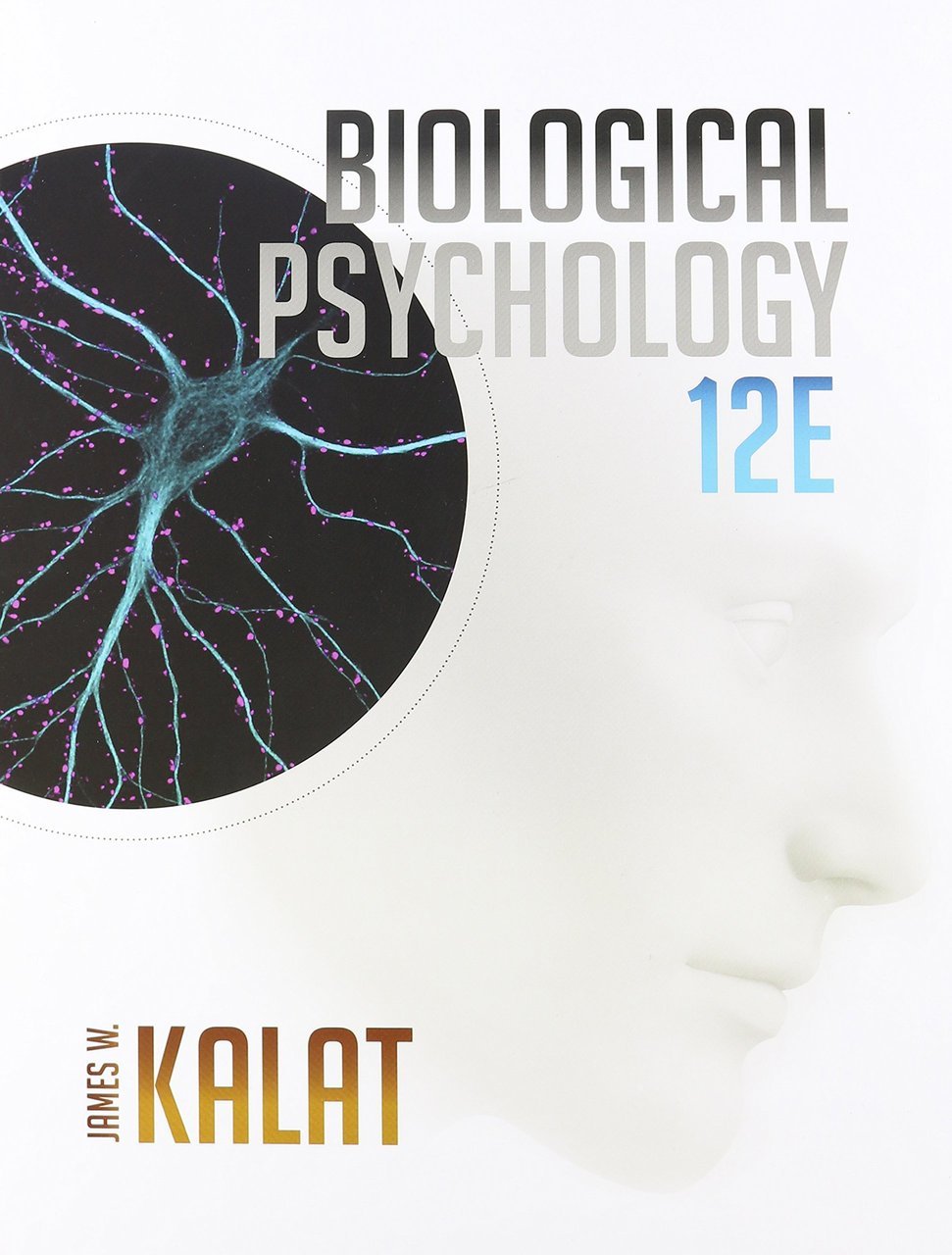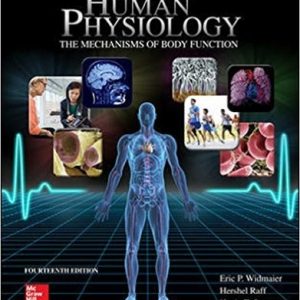This is completed downloadable of Biological Psychology Kalat 12th Edition Test Bank

Product Details:
- ISBN-10 : 1305105400
- ISBN-13 : 978-1305105409
- Author: James W. Kalat
Dr. James W. Kalat’s BIOLOGICAL PSYCHOLOGY is widely used for good reason: an extremely high level of scholarship, a clear writing style with amusing anecdotes, and precise examples. Kalat’s goals are to make biological psychology accessible and to convey the excitement of the search for biological explanations of behavior, and he delivers. Updated with new topics, examples, and recent research findings, the new edition continues this book’s tradition of quality.
Table of Content:
- Ch 1: Nerve Cells and Nerve Impulses
- Ch 1: Chapter Outline
- Ch 1: Learning Objectives
- Ch 1: Introduction
- Module 1.1: The Cells of the Nervous System
- Module 1.1: In Closing
- Module 1.1: End of Module Quiz
- Module 1.2: The Nerve Impulse
- Module 1.2: In Closing
- Module 1.2: End of Module Quiz
- Ch 2: Synapses
- Ch 2: Chapter Outline
- Ch 2: Learning Objectives
- Ch 2: Introduction
- Module 2.1: The Concept of the Synapse
- Module 2.1: In Closing
- Module 2.1: End of Module Quiz
- Module 2.2: Chemical Events at the Synapse
- Module 2.2: In Closing
- Module 2.2: End of Module Quiz
- Ch 3: Anatomy and Research Methods
- Ch 3: Chapter Outline
- Ch 3: Learning Objectives
- Ch 3: Introduction
- Module 3.1: Structure of the Vertebrate Nervous System
- Module 3.1: In Closing
- Module 3.1: End of Module Quiz
- Module 3.2: The Cerebral Cortex
- Module 3.2: In Closing
- Module 3.2: End of Module Quiz
- Module 3.3: Research Methods
- Module 3.3: In Closing
- Module 3.3: End of Module Quiz
- Ch 4: Genetics, Evolution, Development and Plasticity
- Ch 4: Chapter Outline
- Ch 4: Learning Objectives
- Ch 4: Introduction
- Module 4.1: Genetics and Evolution of Behavior
- Module 4.1: In Closing
- Module 4.1: End of Module Quiz
- Module 4.2: Development of the Brain
- Module 4.2: In Closing
- Module 4.2: End of Module Quiz
- Module 4.3: Plasticity after Brain Damage
- Module 4.3: In Closing
- Module 4.3: End of Module Quiz
- Ch 5: Vision
- Ch 5: Chapter Outline
- Ch 5: Learning Objectives
- Ch 5: Introduction
- Module 5.1: Visual Coding
- Module 5.1: In Closing
- Module 5.1: End of Module Quiz
- Module 5.2: How the Brain Processes Visual Information
- Module 5.2: In Closing
- Module 5.2: End of Module Quiz
- Module 5.3: Parallel Processing in the Visual Cortex
- Module 5.3: In Closing
- Module 5.3: End of Module Quiz
- Ch 6: Other Sensory Systems
- Ch 6: Chapter Outline
- Ch 6: Learning Objectives
- Ch 6: Introduction
- Module 6.1: Audition
- Module 6.1: In Closing
- Module 6.1: End of Module Quiz
- Module 6.2: The Mechanical Senses
- Module 6.2: In Closing
- Module 6.2: End of Module Quiz
- Module 6.3: The Chemical Senses
- Module 6.3: In Closing
- Module 6.3: End of Module Quiz
- Ch 7: Movement
- Ch 7: Chapter Outline
- Ch 7: Learning Objectives
- Ch 7: Introduction
- Module 7.1: The Control of Movement
- Module 7.1: In Closing
- Module 7.1: End of Module Quiz
- Module 7.2: Brain Mechanisms of Movement
- Module 7.2: In Closing
- Module 7.2: End of Module Quiz
- Module 7.3: Movement Disorders
- Module 7.3: In Closing
- Module 7.3: End of Module Quiz
- Ch 8: Wakefulness and Sleep
- Ch 8: Chapter Outline
- Ch 8: Learning Objectives
- Ch 8: Introduction
- Module 8.1: Rhythms of Waking and Sleeping
- Module 8.1: In Closing
- Module 8.1: End of Module Quiz
- Module 8.2: Stages of Sleep and Brain Mechanisms
- Module 8.2: In Closing
- Module 8.2: End of Module Quiz
- Module 8.3: Why Sleep? Why REM? Why Dreams?
- Module 8.3: In Closing
- Module 8.3: End of Module Quiz
- Ch 9: Internal Regulation
- Ch 9: Chapter Outline
- Ch 9: Learning Objectives
- Ch 9: Introduction
- Module 9.1: Temperature Regulation
- Module 9.1: In Closing
- Module 9.1: End of Module Quiz
- Module 9.2: Thirst
- Module 9.2: In Closing
- Module 9.2: End of Module Quiz
- Module 9.3: Hunger
- Module 9.3: In Closing
- Module 9.3: End of Module Quiz
- Ch 10: Reproductive Behaviors
- Ch 10: Chapter Outline
- Ch 10: Learning Objectives
- Ch 10: Introduction
- Module 10.1: Sex and Hormones
- Module 10.1: In Closing
- Module 10.1: End of Module Quiz
- Module 10.2: Variations in Sexual Behavior
- Module 10.2: In Closing
- Module 10.2: End of Module Quiz
- Ch 11: Emotional Behaviors
- Ch 11: Chapter Outline
- Ch 11: Learning Objectives
- Ch 11: Introduction
- Module 11.1: What Is Emotion?
- Module 11.1: In Closing
- Module 11.1: End of Module Quiz
- Module 11.2: Attack and Escape Behaviors
- Module 11.2: In Closing
- Module 11.2: End of Module Quiz
- Module 11.3: Stress and Health
- Module 11.3: In Closing
- Module 11.3: End of Module Quiz
- Ch 12: The Biology of Learning and Memory
- Ch 12: Chapter Outline
- Ch 12: Learning Objectives
- Ch 12: Introduction
- Module 12.1: Learning, Memory, and Amnesia
- Module 12.1: In Closing
- Module 12.1: End of Module Quiz
- Module 12.2: Storing Information in the Nervous System
- Module 12.2: In Closing
- Module 12.2: End of Module Quiz
- Ch 13: Cognitive Functions
- Ch 13: Chapter Outline
- Ch 13: Learning Objectives
- Ch 13: Introduction
- Module 13.1: Lateralization of Function
- Module 13.1: In Closing
- Module 13.1: End of Module Quiz
- Module 13.2: Evolution and Physiology of Language
- Module 13.2: In Closing
- Module 13.2: End of Module Quiz
- Module 13.3: Conscious and Unconscious Processes and Attention
- Module 13.3: In Closing
- Module 13.3: End of Module Quiz
- Module 13.4: Social Neuroscience
- Module 13.4: In Closing
- Module 13.4: End of Module Quiz
- Ch 14: Psychological Disorders
- Ch 14: Chapter Outline
- Ch 14: Learning Objectives
- Ch 14: Introduction
- Module 14.1: Substance Abuse and Addiction
- Module 14.1: In Closing
- Module 14.1: End of Module Quiz
- Module 14.2: Mood Disoders
- Module 14.2: In Closing
- Module 14.2: End of Module Quiz
- Module 14.3: Schizophrenia
- Module 14.3: In Closing
- Module 14.3: End of Module Quiz
- Module 14.4: Autism Spectrum Disorders
- Module 14.4: In Closing
- Module 14.4: End of Module Quiz
- Appendix A: Brief, Basic Chemistry
- Appendix B: Society for Neuroscience Policies on the Use of Animals and Human Subjects in Research
- References
- Name Index
- Subject Index/Glossary





